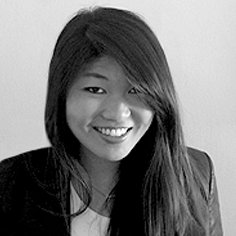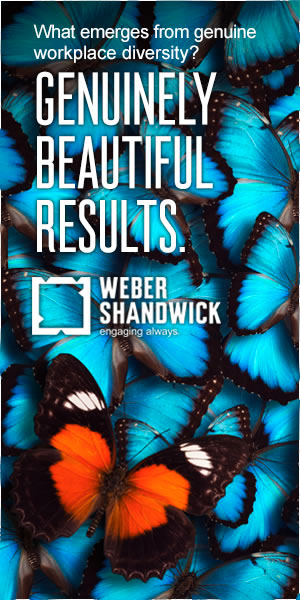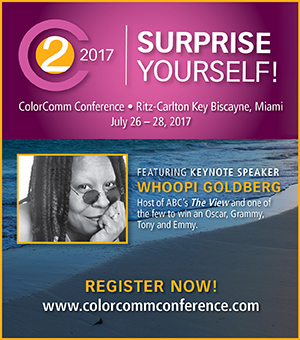The Working Assembly is a multidisciplinary design studio with a focus on branding and visual design. Founded in 2014, they partner with clients and agencies for end-to-end brand building, including strategy and visual identity, print and digital design, content and creative communications.
The agency is an inclusive collective led by Jolene Delisle, a multidisciplinary designer and art director with experience in branding, UX/UI, social activations and ad campaigns for the likes of Arnold, Mother, Sid Lee, and Anomaly. Co-founder Lawrence O’Toole doesn’t see designers as just logo creators or illustrators- he sees them as problem solvers. Having worked with high profile companies such as the Google Creative Lab, he previously served as design director for Momentum Worldwide where he led experiential creative for Porsche and American Express.
Additionally TWA aims to connect with their target audience by employing their target audience. The majority of their staff is female, producing work for women’s lifestyle network Kin Community and online retailer Fab. 80% of their clients are women-owned businesses.
DIVERGE talked to Co-founders Lawrence O’Toole and Jolene Delisle to find out more:
What do you hope to accomplish in 2017?
We are thrilled about some of the upcoming campaign work we have coming out for LOLA, an amazing female founded startup that’s making organic feminine care accessible for everyone. We just recently collaborated with them on their first OOH subway campaign which was really fun. This summer, we’re working with the NYC tourism company NYCgo, to do a big campaign around 25 years of Restaurant Week. For the rest of 2017, we’d love to continue working on amazing assignments that are challenging us and opening us up to new things.
Where do you see your agency going in the next 10 years?
We want to stay small enough that we can be hands on and collaborative with our clients, but big enough that we can support the needs of some of the larger brands. Ideally we’d love to have a mix where we are still working with the local bakery or hotel on a branding project, but also digging into a big Fortune 500 company’s challenge to evolve or change in some way.
Why do you think diversity needs to be a focus in today’s advertising space?
Good advertising reacts to and reflects the world around us. We’re a diverse country with a unique makeup of people. It’s important that as we make work that is culturally relevant it addresses all cultures.
What does it mean to be a certified women- and minority-owned business? How does this inform your work?
80% of our clients are women-owned businesses. We didn’t set out to do this, but as I am the one who is often prospecting clients, we naturally seem to find each other. Supporting these businesses isn’t just important to me- Lawrence and I both believe that more women leading companies and teams is a boom to the economy and we want our work to contribute to a more equal world for everyone. And this even trickles down to the people we work with – who right now are 90% women, not intentional- and also who we hope to mentor and grow.
What was the reason behind forming The Working Assembly? What is the problem you want to address?
As creatives who have spent decades in the advertising, branding, and technology world, we became frustrated with working late into the night, rarely getting the chance to interact with the client, and the subsequent hours and money wasted. We knew what worked and what didn’t work for us.
So we started The Working Assembly, at a point where we were both still employed by our day jobs. At first we didn’t even know we were building something. As projects came up, we made work and we assembled together- it was organic. But then we both started to love working together, and we loved the chance to build bespoke teams depending on the client. Not just any strategist, but a strategist that had years of experience in the dog food industry. A copywriter whose career was focused on servicing financial companies. We could bring exactly what the client needed, which was new- they were used to working with whoever was staffed at an agency. We discovered that we could pitch these larger clients, and tap into the network of talent that we had connected with in our years of working in agency life, bringing on very experienced and hyper-focused talent that was perfectly suited for the job. This all led to us winning client business Palo Alto, Santa Monica, Austin, London, and New York.
So we both quit our day jobs once at a time and began to hire more steady, day to day help.
Describe your initiative, The 24 Hour Assembly. What caused you to create this? Can you give examples of the biggest challenges you face during the 24 hours, and the biggest successes from it?
We realized we wanted to work with startups early on. They had the really cool challenges that came from the mindset of disruption, and we were keen to push envelopes. We loved being able to help develop a startup’s story, then craft and articulate it. We started collaborating with very early-stage startups, acting as their creative sounding board, even working on their minimum viable products or developing their product.
So the 24 Hour Assembly was born. It’s essentially an incubator for startups and companies to get unstuck or accelerate a project already in motion. We assemble one of our highly bespoke teams, and for 24 hours we help a startup discover consumer insights, unlock ideas and create working concepts to test and iterate. We also work with established organizations who are interested in developing a new product or division of their current company. Begin the quick brainstorm around features, market value and see if the idea has naming.
Lawrence: This initiative also stems from a realization that clients need multi-disciplinary teams, instead of freelancers here and there. The 24 Hour Assembly is composed of strategists, copywriters, and people to shoot ideas off with. Structure still matters with this model.
Can you tell me about a memorable project?
We did a 24 Hour Assembly for one client and it turned into an 9 month engagement, that eventually became a whole separate company for them. We started with the 24 hour assembly working towards an minimum viable product and name, branding the company, then spent the next 6 months developing what is now the beta version of the product. The company has split off from the original company to now have 8 employees and a new office to come into its own.
Advice for those that want to get into your field?
Lawrence: As a designer, know that you are also a problem solver. Every designer can work within any visual medium. There can be specialties, but often people with varied experience outside the tasks at hand can really come at a problem in a new and exciting way, so try to be as multi-disciplined as you can.
Creatives can be account people. In addition to their creative work, they also manage a scope of work, prospect with clients, and manage budgets and deadlines. Our clients are happy they have a direct line of communication to someone who understands the logistics of what goes into making things. They appreciate brainstorming on the fly and coming up with creative solutions together. It also challenges the designer to think more about the big picture.
Jolene: When you quit your job to start your own business, people will think you’re crazy. Lawrence and I had pretty sweet day jobs that seemed stable and safe. But what we learned was that being stable for us meant figuring out our own work/life balance. Managing our own schedules and time. We didn’t want “safe”. That was what bored us in the first place. We wanted to work on new and exciting challenges. But the reality is, when you start a company you believe in and work really long hours, you will find you spend half your time listening to people question your business (or sanity). It’s not easy. But if it were, everyone would be doing it.
You won’t be for everyone. Early on we had opportunities to go to big companies. I remember driving with Lawrence to a big CPG company in White Plains and presenting our small team in a big board room. They were looking for a digital agency of record. The opportunity was enormous for us on paper. We didn’t even know how we got in the room. In the lobby were Huge and Big Spaceship. If we got this client, we could scale really fast and we could become really big and we could get a really expensive coffee machine and a slick conference room- but we realized that’s not what we want to do at all. We weren’t AOR for a CPG material. Even if we grew to support this work, we knew it wasn’t ultimately where we saw ourselves.
I think the biggest thing we learned is this: everything you are doing right now, take note of it. See what is working well and take notes and ask questions. If you see a better way to do something, create it. Make it. Look for the void and where you can help and bring your expertise and vision.



